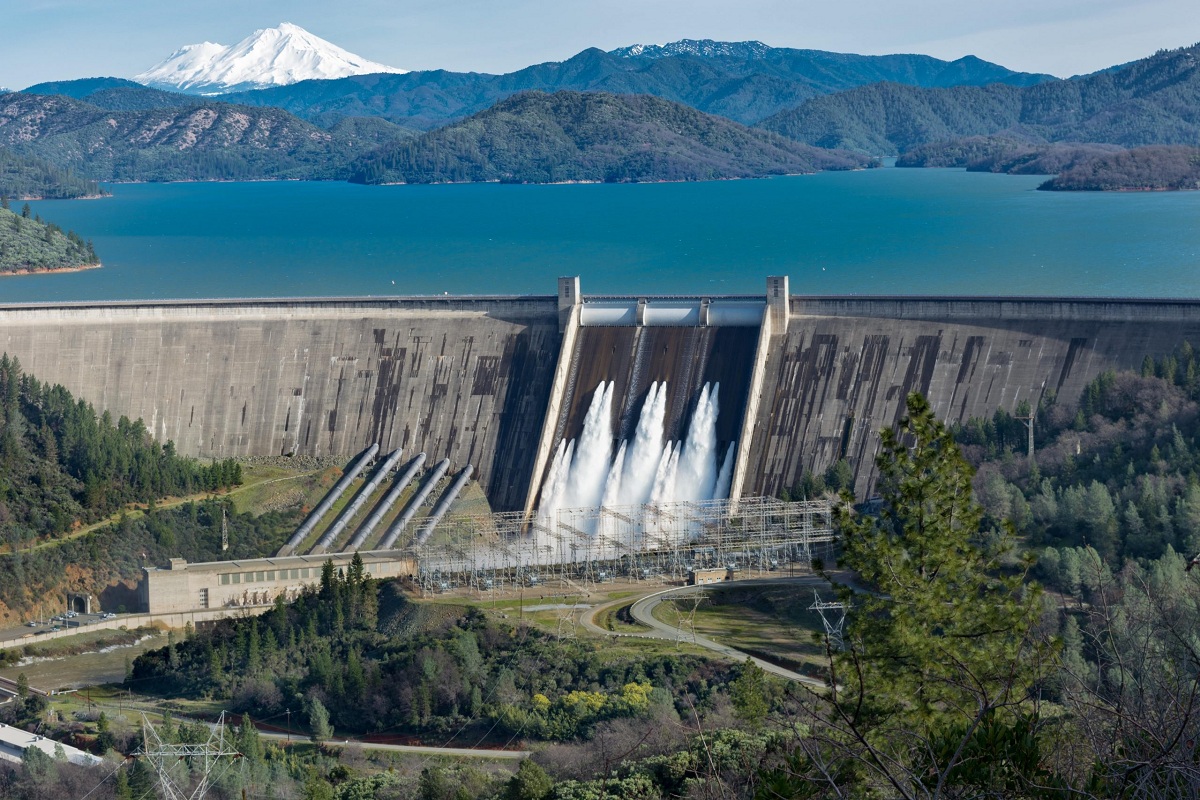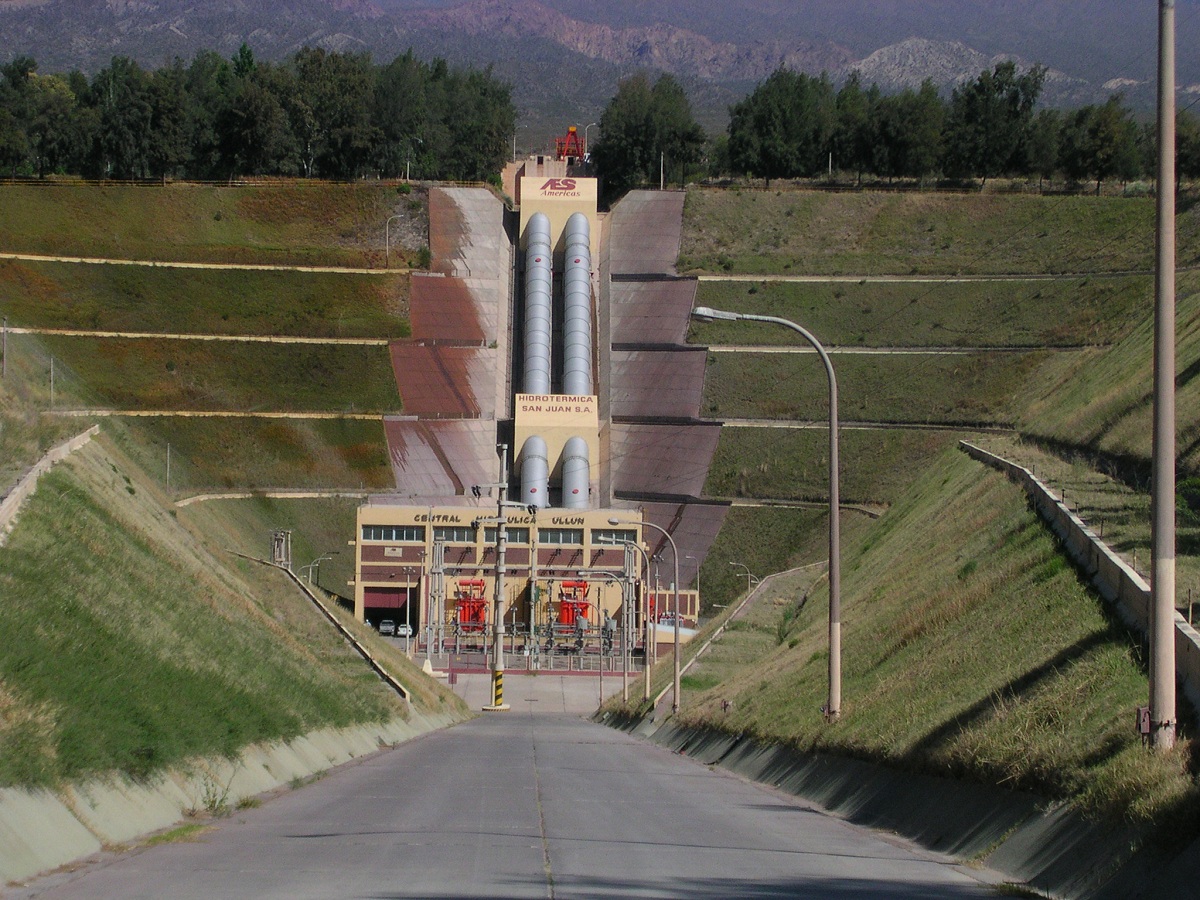
Hydroelectric plants are limited by the particularities and characteristics of their regions. When starting up this type of installation, it must be taken into account that the topography of the land determines the choice of civil works and machinery. There are different types of hydroelectric plants depending on the place and the way of producing hydraulic energy.
In this article we are going to tell you everything you need to know about the different types of hydroelectric power plants and their characteristics.
Hydroelectric power station
When we start up a hydroelectric plant, we want to be able to generate energy from the water stored in the reservoir. The first thing to do is generate mechanical energy and convert it into electrical energy.
The purpose of the catchment system is to create a slope that generates stored potential energy. The water trickles down to gain energy through gravitational differences. As the water passes through the turbine, it creates a rotational motion that powers up the alternator, converting mechanical energy into electricity.
The character of a hydroelectric plant goes through the components that compose it. Starting with the dam, this is the most important element since it is in charge of keeping the water in the reservoir. In this tank there is an overflow allows filtering excess water without passing through the turbine.
A very important element in a hydroelectric plant is the energy destroyer, which prevents excessive masses of water from causing massive damage to the land. The water used always passes through the cabin. In addition to the control area, there are turbines and alternators. Turbines convert mechanical energy into kinetic energy. At the same time, an alternator converts this kinetic energy into electricity.
Finally, the pipes are the pipes that direct the water to where it is supposed to go. In turn, the valves are the channels that control the passage of water through these pipes, preventing the water from overflowing.
Types of hydroelectric plants

Within the scope of this segment, there are several types of hydroelectric plants, which will depend on the power they have and the amount of electrical energy they can accumulate. Therefore, the types of hydroelectric power plants can be:
- High power hydroelectric plants: they are hydroelectric plants with a power greater than 10MW
- Mini Hydroelectric Plants – They are hydroelectric plants with a power between 1MW and 10MW
- Micro Hydroelectric Plants – They are hydroelectric plants with a power of less than 1MW
Another variable that determines the type of hydroelectric plants is the land on which they are located. We found the following:
- Continuous flow hydroelectric plants: These hydroelectric plants do not have water storage areas, so they require a high enough river flow to generate power. Its disadvantage is that it does not produce energy during droughts.
- Reservoir Hydroelectric Power Plant: in this case, a dam is an artificial storage place where a large amount of water rises above the turbines. With such amounts, you can control the amount of water that passes through them and the energy produced.
- Hydroelectric power station at the foot of a dam: in this case, a section of a river or lake is taken and a dam is built, placing the turbines behind it.
Operation of the types of hydroelectric plants

We are going to see one by one the operation of the types of hydroelectric power plants:
- Continuous flow hydroelectric plants: This is a use where part of the river water is diverted through an intake and conducted through a canal or pipe to a power plant where the turbines are manufactured. Once the energy is obtained, the diverted water is returned to the riverbed.
- Central at the foot of the dam: In addition to rainwater and meltwater, it is also possible to build reservoirs in the riverbed to store its contributions. The main feature is its ability to regulate the output of water and run the turbine when necessary.
There is a type of irrigation canal hydroelectric power station. Two types of plants are distinguished in this group:
- Those that take advantage of the unevenness that exists in the channel itself, installing penstocks, parallel to the canal road, to convey the water to the plant and then return it to the normal course of the canal.
- Those that take advantage of the unevenness between the canal and the nearby riverbed. The plant is installed near a river and the excess water is treated with turbines in the canal.
Advantages of hydroelectric power
As you can see, this brings great benefits to the population and not only at the energy level. Let's group these advantages to analyze them one by one:
- It is a renewable energy. That is, it does not run out over time as fossil fuels can. Water in itself is not unlimited, but it is true that nature constantly provides us with rain. In this way we can recover and continue using it as a source of energy.
- Being completely natural and renewable does not pollute. It is a clean energy.
- As we have said before, it not only benefits us in the energy contribution, but it is also combined with other actions such as protection against floods, irrigation, water supply, generation of roads, tourism or landscaping.
- Contrary to popular belief, both operating and maintenance costs are low. Once the dam and the entire catchment system have been built, maintenance is not complex at all.
- Unlike other types of energy exploitation, the works carried out to take advantage of this type of energy have a long useful life.
- The turbine is used to generate energy. A turbine is quite simple to use, very safe and efficient. This means that production costs are lower and that it can be started and stopped quickly.
- It hardly requires vigilance on the part of the workers, since it is a simple position to carry out.
Just the fact that it is a renewable and clean energy with low costs already makes it a competitive energy in the markets.
I hope that with this information you can learn more about the types of hydroelectric power plants and their characteristics.
